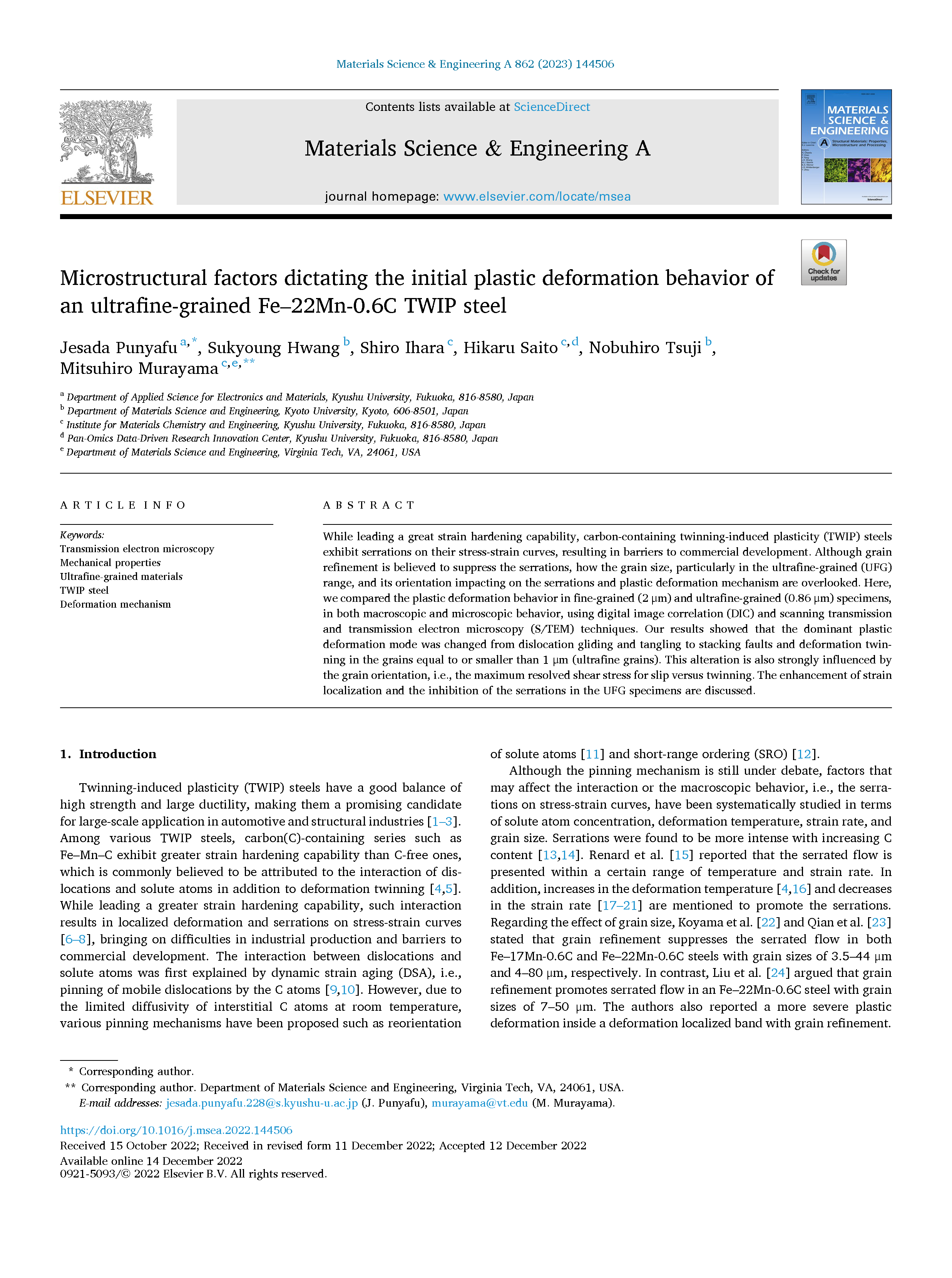Microstructural factors dictating the initial plastic deformation behavior of an ultrafine-grained Fe–22Mn-0.6C TWIP steel
Materials Science Engineering A volume862,Articlenumber:144506 (2023)研究論文概要
While leading a great strain hardening capability, carbon-containing twinning-induced plasticity (TWIP) steels exhibit serrations on their stress-strain curves, resulting in barriers to commercial development. Although grain refinement is believed to suppress the serrations, how the grain size, particularly in the ultrafine-grained (UFG) range, and its orientation impacting on the serrations and plastic deformation mechanism are overlooked. Here, we compared the plastic deformation behavior in fine-grained (2 μm) and ultrafine-grained (0.86 μm) specimens, in both macroscopic and microscopic behavior, using digital image correlation (DIC) and scanning transmission and transmission electron microscopy (S/TEM) techniques. Our results showed that the dominant plastic deformation mode was changed from dislocation gliding and tangling to stacking faults and deformation twinning in the grains equal to or smaller than 1 μm (ultrafine grains). This alteration is also strongly influenced by the grain orientation, i.e., the maximum resolved shear stress for slip versus twinning. The enhancement of strain localization and the inhibition of the serrations in the UFG specimens are discussed.
